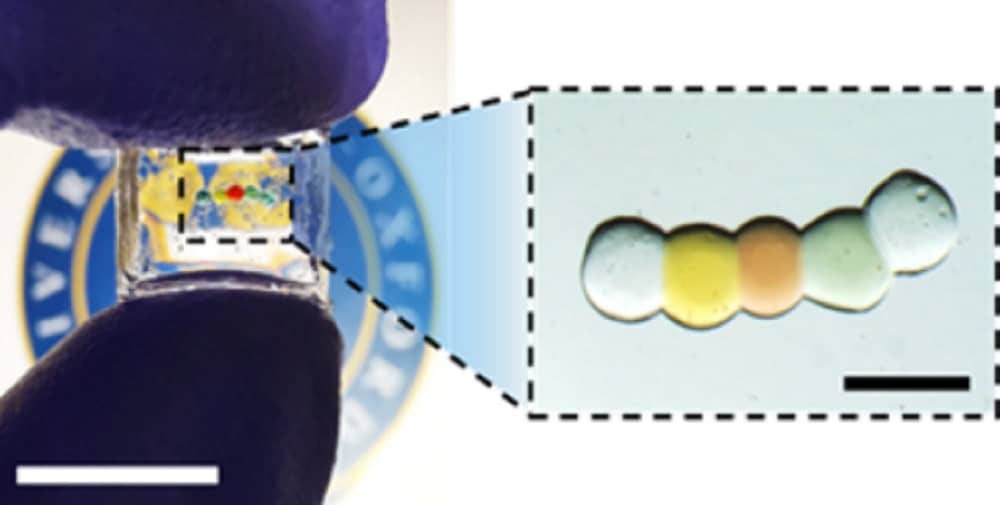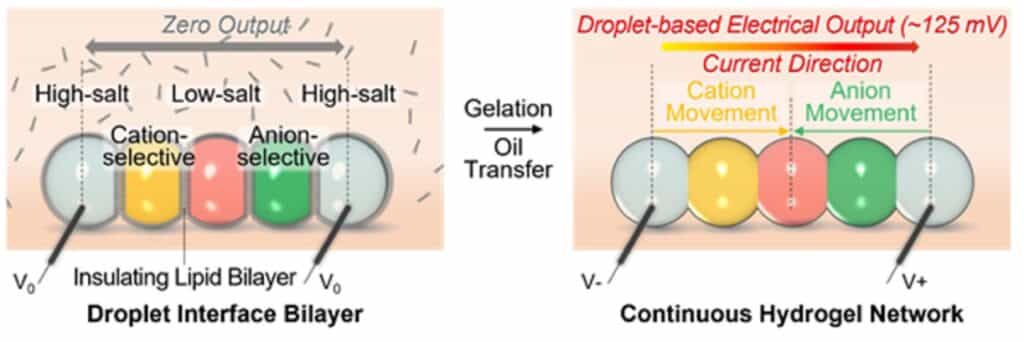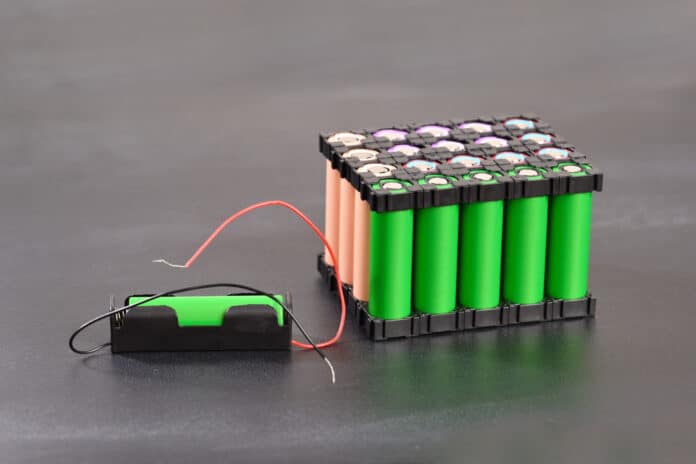Researchers have developed a miniature battery that could be used to power tiny devices integrated into human tissues.
Small bio-integrated devices interacting with and stimulating cells could have important therapeutic applications, such as targeted medication delivery and wound healing acceleration. However, all of these devices require a power source to operate correctly. This device regulated the biological activity of human neurons, opening the path for developing small bio-integrated devices with various applications in biology and medicine.

Researchers from the Department of Chemistry at the University of Oxford developed a miniature power source capable of altering the activity of cultured human nerve cells. The device uses internal ion gradients to generate energy, inspired by how electric eels generate electricity.
A chain of five nanolitre-sized droplets of conductive hydrogel (a 3D network of polymer chains containing a large amount of absorbed water) creates a tiny soft power source. Each droplet has a different composition, resulting in a salt concentration gradient across the chain. Lipid bilayers divide the droplets from one another, providing mechanical support while preventing ions from passing between them.
The power source is activated by chilling the structure to 4°C and altering the surrounding media, which breaks the lipid bilayers and forces the droplets to form a continuous hydrogel. This allows the ions to travel across the conductive hydrogel, from the high-salt droplets at either end to the low-salt droplet in the middle. The energy generated from the ion gradients is converted into electricity by connecting the end droplets to electrodes, allowing the hydrogel structure to function as a power source for external components.

Dr Yujia Zhang (Department of Chemistry, University of Oxford), the lead researcher for the study, said, “The miniaturized soft power source represents a breakthrough in bio-integrated devices. We have developed a miniature, biocompatible system for regulating cells and tissues on the microscale by harnessing ion gradients. This opens up a wide range of potential applications in biology and medicine.”
According to the researchers, the modular architecture of the device would allow many units to be joined to enhance the voltage or current generated. This could open the door to powering next-generation wearable devices, bio-hybrid interfaces, implants, synthetic tissues, and microrobots. Combining 20 five-droplet units in series could illuminate a light-emitting diode, which requires about 2 Volts. They believe that automating device manufacture, such as with a droplet printer, might produce droplet networks comprising thousands of power units.
Professor Hagan Bayley (Department of Chemistry, University of Oxford), the research group leader for the study, said, “This work addresses the important question of how stimulation produced by soft, biocompatible devices can be coupled with living cells. The potential impact on devices including bio-hybrid interfaces, implants, and microrobots is substantial.”
In conclusion, the miniaturized soft power source represents a breakthrough in bio-integrated devices, allowing for the development of next-generation wearable devices, bio-hybrid interfaces, implants, synthetic tissues, and microrobots.
Journal Reference:
- Yujia Zhang, Jorin Riexinger, et al. A microscale soft ionic power source modulates neuronal network activity. Nature. DOI: 10.1038/s41586-023-06295-y
